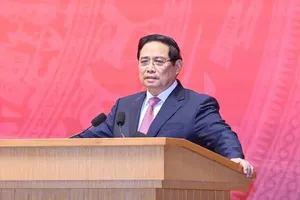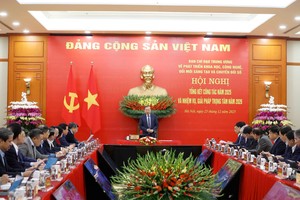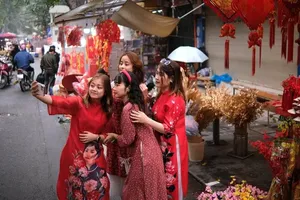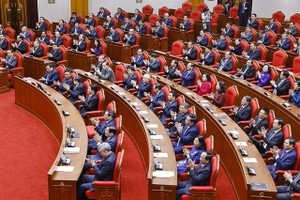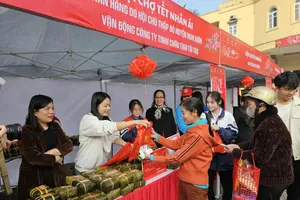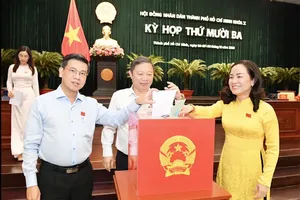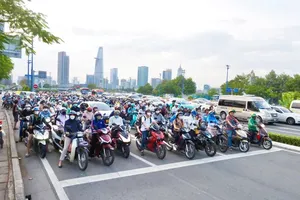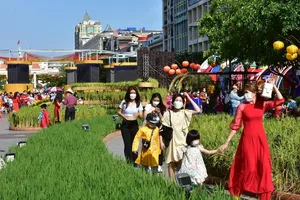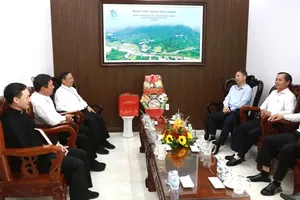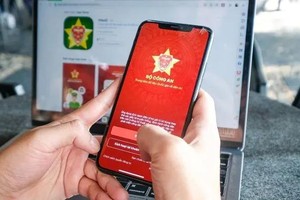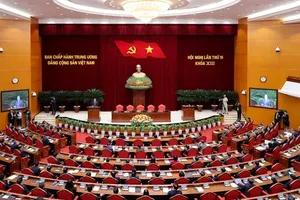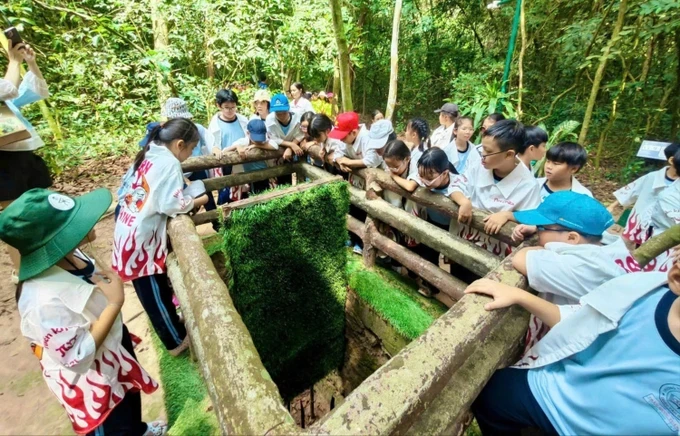
Reimagining history: Engaging new generations with tales of resilience
On a recent April afternoon, over 200 students from HCMC University of Technology (Vietnam National University – Ho Chi Minh City) gathered in a cinema to watch “Dia dao: Mat troi trong bong toi” (Tunnels: The Sun in Darkness). More than mere entertainment, this viewing became a visceral journey into the past, connecting them with their forebears’ heroic experiences. Through the stark realism of the Cu Chi Tunnels – the legendary “underground city” that symbolized courage and patriotism, history transcended textbooks and came alive on screen.
Many students expressed profound awe witnessing the ingenuity and resilience of citizens and soldiers who lived beneath the earth, confronting relentless bombardment with extraordinary fortitude. The film catalyzed national pride, fostering deeper understanding of peace’s true cost – forged through blood, tears, and indomitable spirit.
Phan Quoc Thieu, a lecturer at the National Defense and Security Education Center (Vietnam National University – Ho Chi Minh City), observed that today’s youth engage with information differently. They are less inclined toward lengthy articles or statistical reports but possess deep emotion, sharp critical thinking, and genuine thirst for truth when presented appropriately.
This understanding underscores the trend of conveying history through innovative mediums – cinema, music, social media, graphic novels, podcasts, and interactive exhibitions. Films like “Mui co chay” (Scent of Burning Grass), “Dao, Pho va Piano” (Peach Blossom, Pho, and Piano), and the above film have demonstrated remarkable ability to connect with young audiences organically.
When young people develop genuine historical understanding, they are empowered to counter misinformation effectively. While distorted war narratives spread rapidly, well-reasoned comments from historically aware youth can puncture falsehood’s bubble.
Technology: Breathing life into past
Technology is actively bringing history to life within museum walls. Recently, the Ho Chi Minh Campaign Museum has experienced significant visitor surges, consistently drawing 1,000-2,000 people daily. Museum staff work tirelessly accommodating this influx, sometimes requiring ten individuals to ensure attentive service. The demographic is remarkably diverse – from Military Region 7 officers and veterans to students, with the latter forming the majority.
In the central hall, young people gather around a 60-square-meter electronic diorama and large-screen television depicting key Ho Chi Minh Campaign events in Vietnamese and English. As the diorama animates, synchronized flashing lights and sound effects recreate the terrain and various attack axes, offering an engaging experience for all visitors.
Luu Gia Linh, a student from HCMC University of Industry, shared: “Observing the dynamic explanations made me feel truly immersed in the historical flow, as if sensing the heroic campaign atmosphere from years ago. It deepened my appreciation for independence and freedom, especially during this 50th anniversary of Southern Liberation and National Reunification Day.”
Similarly, at the Saigon - Gia Dinh Special Forces Museum, modern technology provides captivating experiences. A large interactive electronic display allows visitors to explore detailed information about the Saigon Special Forces’ formation, key battles, and significant historical sites.
Tran Thai Ha, a museum staff member, explained that technology facilitates accurate, concise information delivery, particularly appealing to younger audiences. Without physical visits, individuals can explore the secret basement that once concealed over two tonnes of weapons through vivid 360-degree imagery.
“People can visualize themselves there, touching the screen to navigate every corner – almost like experiencing a virtual reality game”, elaborated Tran Thai Ha.
Visitor numbers have surged recently. Beyond interactive exhibits, visitors can watch an 18-minute documentary projected onto walls using modern technology, realistically depicting Saigon Special Forces’ images and stories. Thanks to technology, history transcends dry text, becoming engaging, emotionally resonant, and forging a vital bridge between young people and national collective memory.
When history transforms from static form into dynamic discovery, viewers not only remember but deeply empathize. This effectively ensures history endures untainted by distorting forces. History should not be confined to dusty shelves but should live vibrantly within community consciousness. Peace is not solely the ancestors’ achievement but a living legacy – continued, cherished, and protected by the present generation.
Clear, correct understanding of historical value
At a national scientific conference titled “The Great Victory of Spring 1975 and the New Era of Development of Vietnam”, held in HCMC on April 20, Minister Luong Tam Quang of Public Security emphasized the critical need to intensify propaganda and historical education, particularly for younger generations, ensuring clear understanding of the Great Spring Victory’s historical significance.
The Spring 1975 Victory yielded profound historical lessons that must continue being studied and applied to ongoing nation-building efforts, propelling Vietnam into a new development era.
Head Nguyen Tan Kiet of the Arts Division under the HCMC Department of Culture and Sports highlighted widespread national interest in April 30 commemorations. Museums report substantial visitor increases, particularly among veteran delegations revisiting former battlefields and historical sites associated with resistance wars and the April 30 victory, including the Cu Chi Tunnels.
The Department has directed museums to meticulously prepare displays and thematic exhibitions with new content. Statistics from March 15 to April 15 indicate that department museums have already received over 200,000 visitors, with numbers expected to rise further.
Combating all attempts to distort history
The keynote report presented at the national scientific conference by Head Nguyen Trong Nghia of the Central Propaganda and Mass Mobilization Commission affirmed that the General Offensive and Uprising of Spring 1975 serves as a vital historical lesson educating people, especially younger generations, about patriotic tradition.
Simultaneously, it is crucial to actively combat erroneous viewpoints, thwarting all attempts to distort history and the divisive schemes of hostile forces against the Vietnamese revolution.
Through this, the nation must continue to encourage, mobilize, and unite all forces to harness the entire population’s strength and modern era’s power to successfully realize the cause of building and protecting the Socialist Republic of Vietnam and the aspiration for a prosperous nation standing shoulder to shoulder with the world’s leading powers.
